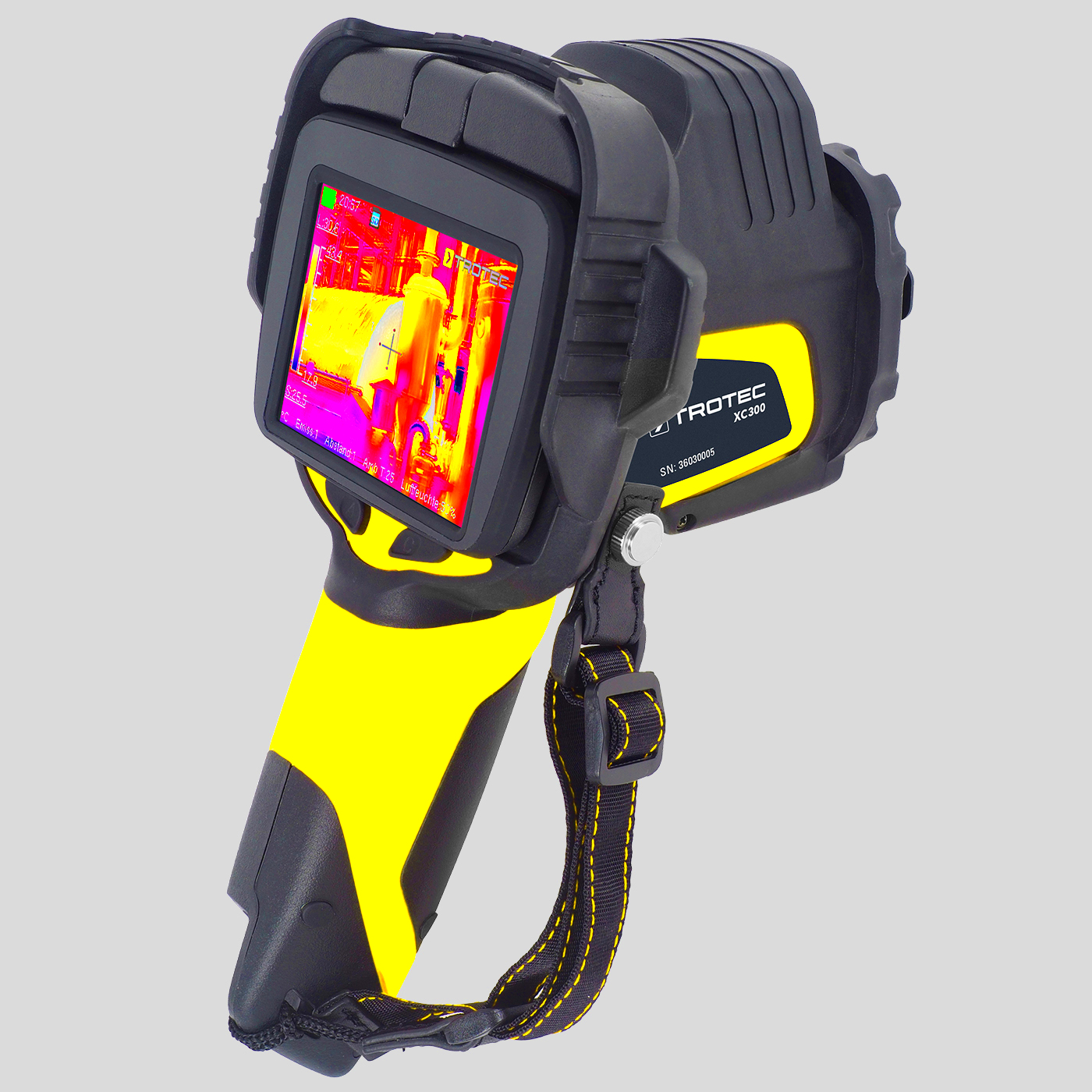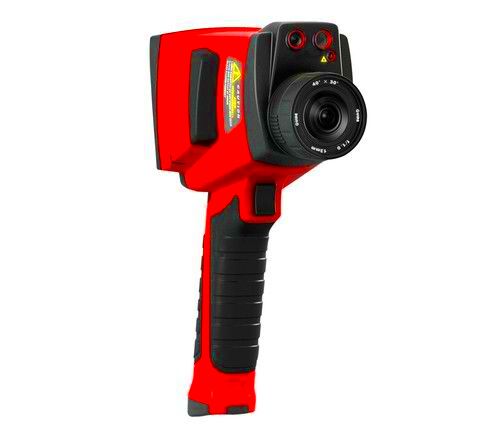A thermal imaging camera allows you to see heat emitted by objects and display it as an image. Unlike regular cameras that capture visible light, thermal cameras detect infrared radiation, turning it into a visible image. This technology is used in a wide range of industries, from building inspections to healthcare, firefighting, and security. With thermal cameras, you can identify heat leaks, equipment malfunctions, and even monitor body temperatures. Whether you're a professional or a hobbyist, understanding thermal imaging technology can help you decide if this tool is right for your needs.
Factors Affecting the Cost of Thermal Imaging Cameras

The cost of a thermal imaging camera can vary greatly depending on several factors. Here are some of the main ones:
- Resolution: Higher resolution cameras provide more detail, which increases their cost. A camera with a resolution of 320x240 will generally be more affordable than one with 640x480 resolution.
- Detection Range: The range at which a camera can detect heat affects its price. Cameras with a long detection range (several hundred meters) are usually more expensive.
- Sensitivity: Cameras that detect smaller temperature variations are more sensitive and often come with a higher price tag.
- Frame Rate: A higher frame rate allows for smoother video, which is essential in dynamic environments like firefighting. This feature increases the cost.
- Brand: Well-known brands, like FLIR or Fluke, tend to cost more due to their reputation and reliability.
- Additional Features: Extra features like Wi-Fi connectivity, recording capabilities, or advanced image processing can also raise the price.
Also Read This: Photographic Prowess: Tips for Taking Outstanding eBay Photos
Types of Thermal Imaging Cameras and Their Prices
Thermal imaging cameras come in various types, each designed for different applications. Below are the most common types and their general price ranges:
| Type | Description | Price Range |
|---|---|---|
| Handheld Thermal Cameras | Portable and easy to use for a variety of applications, including home inspections and electrical maintenance. | $200 - $10,000 |
| Fixed Mount Thermal Cameras | Used for continuous monitoring in specific locations, such as factories, power plants, or security systems. | $500 - $25,000 |
| Camera Modules | Small, embedded thermal sensors for integration into other systems, like drones or robots. | $100 - $5,000 |
| High-End Industrial Cameras | These cameras offer high resolution, extended detection range, and superior sensitivity for industrial use. | $5,000 - $50,000+ |
As you can see, the price of a thermal imaging camera can vary significantly based on the type and features. While handheld cameras are affordable and suitable for casual or home use, high-end models designed for industrial applications can cost tens of thousands of dollars. It's important to evaluate your specific needs to find the right camera for your budget.
Also Read This: How DJs Make Money on YouTube Tips for Monetizing Music Channels
How to Choose the Right Thermal Imaging Camera for Your Needs
Choosing the right thermal imaging camera can feel overwhelming with so many options available. But by considering your specific needs, it can be a straightforward decision. Here's how to select the best one:
- Identify Your Purpose: Think about what you need the camera for. Are you inspecting buildings, doing electrical work, or using it for security? Different tasks require different features. For instance, if you need detailed analysis, opt for higher resolution and sensitivity.
- Consider the Resolution: The higher the resolution, the more detail you’ll capture. If you’re using it for basic inspections, lower resolutions may suffice. But for more technical uses, like detecting minor temperature variations, invest in a higher resolution camera.
- Check the Detection Range: How far do you need the camera to detect heat? For instance, industrial applications may need cameras with a long detection range, whereas handheld models used for small-scale inspections require less range.
- Evaluate Sensitivity: Thermal sensitivity is the camera’s ability to detect small temperature changes. The more sensitive the camera, the more precise the results. This is particularly important for tasks that require high accuracy.
- Think About Portability: If you plan to move the camera around often, weight and size become important factors. A lightweight, handheld model may be best if you need flexibility.
- Budget: Thermal cameras can vary in price. Set a budget that aligns with your needs. Remember, sometimes spending a little more on features that fit your specific use can save you money in the long run.
By following these simple steps, you can find a thermal imaging camera that works perfectly for your needs, whether for professional or personal use.
Also Read This: A Look at the Leading Technology Companies Shaping the USA
Where to Buy Thermal Imaging Cameras
When it comes to purchasing a thermal imaging camera, there are several places to consider. Here are some of the most common options:
- Specialty Retailers: Stores that specialize in electronics or safety equipment often carry a variety of thermal imaging cameras. Some well-known retailers include Best Buy, Home Depot, or industrial supply stores like Grainger.
- Online Marketplaces: Websites like Amazon, eBay, and Newegg offer a wide range of thermal cameras with customer reviews that can help you make a decision. You can compare prices and find deals easily online.
- Direct from Manufacturers: Brands like FLIR, Fluke, and Seek Thermal offer their cameras directly through their websites. Buying direct can sometimes provide the best warranty and customer support.
- Used and Refurbished Cameras: If you're on a tight budget, you can explore used or refurbished thermal cameras. Websites like eBay or certified resellers might offer discounted, quality equipment, often with warranties.
Before purchasing, it’s important to read reviews, compare prices, and check for any additional costs like shipping or taxes. Make sure you’re getting the best deal for your needs and budget.
Also Read This: Exploring the Extinction of Dinosaurs Through Documentary
Common Uses for Thermal Imaging Cameras
Thermal imaging cameras are incredibly versatile and can be used in a variety of industries. Here are some of the most common applications:
- Building Inspections: Thermal cameras are widely used to detect heat loss, air leaks, or water damage in buildings. They can identify insulation gaps or hidden mold, helping homeowners and contractors make repairs before problems escalate.
- Electrical Inspections: Electricians use thermal imaging to identify overheating circuits, faulty wiring, or malfunctioning electrical panels. This can help prevent fires and improve the overall safety of electrical systems.
- Firefighting: Firefighters use thermal imaging to locate victims in smoke-filled areas and identify hotspots in burning structures. It provides a clear view of heat sources through dense smoke and darkness, saving lives during emergency situations.
- Healthcare: Thermal imaging cameras are used in healthcare to detect fever or inflammation in patients. They can be particularly useful in screening for illnesses or identifying areas of concern in the body without needing direct contact.
- Manufacturing and Industrial Applications: In industries like oil and gas or manufacturing, thermal imaging is used to inspect machinery for hot spots, which could indicate potential failures. It helps with preventative maintenance, reducing downtime and costs.
- Security and Surveillance: Thermal cameras are used for surveillance in low light or nighttime conditions. They can detect intruders based on heat signatures, even in complete darkness, making them useful for both residential and commercial security systems.
As you can see, the uses of thermal imaging cameras are vast. Whether you’re a homeowner looking to save energy, an electrician inspecting equipment, or a first responder in an emergency, thermal cameras offer valuable insights that can improve safety and efficiency in various situations.
Also Read This: Dropshipping Dynamo: Mastering AliExpress to Amazon Dropshipping
Maintenance and Additional Costs for Thermal Imaging Cameras
Thermal imaging cameras are built to last, but like any advanced technology, they require regular maintenance to ensure optimal performance. Along with maintenance, there may be some additional costs to keep in mind. Here's a look at what to expect:
- Battery Replacement: Most thermal cameras are powered by rechargeable batteries, and like all batteries, they degrade over time. Depending on the camera’s battery type, you may need to replace it after a few years of use, which can cost anywhere from $30 to $150.
- Calibration: For precise temperature measurements, thermal cameras may need to be calibrated periodically. This can often be done through the manufacturer or a certified technician. Calibration costs vary, but you can expect to pay anywhere between $100 and $500, depending on the complexity of the camera.
- Software Updates: Some thermal cameras come with specialized software for analyzing thermal data. Manufacturers may release updates that improve the camera’s performance or offer new features. While some updates are free, others may require a subscription or a one-time fee.
- Storage and Accessories: Storing thermal images and videos requires extra storage space, such as SD cards or cloud storage services. Additionally, accessories like carrying cases, tripods, or lens filters can add to your costs. These accessories usually range from $20 to $500 or more.
- Repairs: If your camera gets damaged or malfunctions, repairs can be expensive. Depending on the brand and damage, repair costs can range from $200 to $1,000 or more. Opting for a warranty or extended service plan can help mitigate these costs.
While thermal imaging cameras come with these additional costs, they provide immense value, and with proper care, they can serve you for years. Regular maintenance ensures that you get the most accurate readings and extend the life of your camera.
Also Read This: The Top Ten Technology Companies Worth Keeping an Eye On in the USA
FAQ
Here are some frequently asked questions about thermal imaging cameras:
- How accurate are thermal imaging cameras?
Thermal cameras are highly accurate, especially when calibrated regularly. However, their accuracy can be affected by environmental factors like weather, distance, and the material being scanned. - Can thermal cameras detect human body temperature?
Yes, thermal cameras are commonly used to detect body temperature and can help identify individuals with fever, especially in healthcare or security applications. - Do I need special training to use a thermal camera?
While basic thermal imaging cameras are user-friendly, understanding how to interpret thermal data effectively requires some training. Manufacturers often offer guides, and there are many online resources available. - Are thermal imaging cameras waterproof?
Many thermal cameras are built to be water-resistant, but not all are waterproof. Check the specifications for your model to see its IP rating, which indicates its water and dust resistance. - Can thermal cameras be used at night?
Yes, thermal imaging cameras excel in low light and nighttime conditions. They detect infrared radiation emitted by objects, so they work in complete darkness without the need for additional lighting.
Conclusion
Thermal imaging cameras are powerful tools that offer clear insights into heat patterns, making them invaluable for various applications across industries. Whether you are inspecting buildings, performing electrical work, or ensuring safety in emergencies, these cameras can save time and help detect potential issues early on. When purchasing a thermal imaging camera, it’s essential to consider factors like resolution, range, and sensitivity to ensure that you choose the right model for your needs. Remember to factor in ongoing maintenance and additional costs to keep your camera in top condition. With the right investment and care, a thermal imaging camera can provide reliable service for years to come, making it an essential tool for both professionals and enthusiasts alike.

 admin
admin








